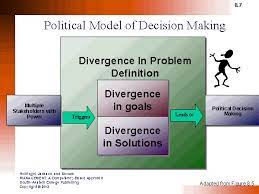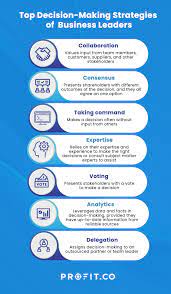RFQ: Understanding the Request for Quotation Process
In the business world, efficiency and cost-effectiveness are key factors that can make or break a company’s success. When it comes to procuring goods or services, organizations often turn to a Request for Quotation (RFQ) process. In this article, we will delve into what an RFQ is, its purpose, and how it benefits both buyers and suppliers.
What is an RFQ?
An RFQ is a formal document used by businesses to solicit quotes or bids from potential suppliers for specific products or services they require. It serves as a means of gathering information about pricing, delivery terms, and other relevant details from different vendors. The RFQ typically includes a description of the required goods or services, specifications, quantities needed, delivery timelines, and any additional requirements.
Purpose of an RFQ:
The primary purpose of an RFQ is to streamline the procurement process by inviting competitive bids from multiple suppliers. By doing so, buyers can evaluate and compare different offers to make informed decisions based on factors such as price, quality, reputation, and delivery capabilities. The RFQ process helps ensure transparency in supplier selection while promoting fair competition among vendors.
Benefits for Buyers:
For buyers, the RFQ process offers several advantages. Firstly, it allows them to assess various suppliers’ capabilities and offerings side by side. This enables them to make well-informed decisions based on their specific requirements and budget constraints. Additionally, the competitive nature of the RFQ process often leads to better pricing as suppliers strive to offer their most competitive quotes. Lastly, the standardized format of an RFQ simplifies evaluation and comparison of vendor proposals.
Benefits for Suppliers:
Suppliers also benefit from participating in the RFQ process. By responding to an RFQ with a competitive quote that meets all specified requirements, they have an opportunity to win new business contracts. Moreover, engaging in the RFQ process helps suppliers expand their network, gain exposure to potential clients, and build relationships within the industry. Even if a supplier is not selected for a particular project, the RFQ process can provide valuable insights into market trends and customer expectations.
Conclusion:
The Request for Quotation (RFQ) process plays a crucial role in efficient procurement practices. It allows buyers to gather competitive bids from multiple suppliers, compare offerings, and make informed decisions based on factors such as price, quality, and delivery capabilities. Simultaneously, suppliers benefit from the opportunity to win new business contracts and expand their network. By embracing the RFQ process, organizations can enhance their procurement efficiency while fostering healthy competition among suppliers.
Disclaimer: This article is for informational purposes only and should not be considered as legal or financial advice.
Understanding RFQ: Frequently Asked Questions about RFP, RFQ, RFQ vs RFI, and RFQ in Construction
- What is an RFP and RFQ?
- What is the difference between RFQ and RFP construction?
- How is RFQ done?
- What is RFQ vs RFI?
What is an RFP and RFQ?
An RFP (Request for Proposal) and RFQ (Request for Quotation) are both formal documents used in the procurement process, but they serve different purposes.
RFP (Request for Proposal):
An RFP is a document that organizations use to solicit proposals from potential suppliers or service providers when they have a complex project or need. It typically includes detailed information about the project’s requirements, objectives, scope of work, timeline, budget, evaluation criteria, and any specific terms or conditions. The purpose of an RFP is to invite vendors to submit comprehensive proposals that outline their approach to meeting the buyer’s needs. The evaluation process often involves assessing factors beyond price, such as technical expertise, experience, qualifications, and proposed solutions.
RFQ (Request for Quotation):
An RFQ is a document used to request price quotes from potential suppliers for specific products or services. Unlike an RFP, an RFQ focuses primarily on pricing and other commercial terms. It typically includes a description of the required goods or services, quantities needed, delivery timelines, payment terms, and any additional requirements. The purpose of an RFQ is to gather competitive bids from multiple vendors so that buyers can compare prices and select the most suitable supplier based on cost-effectiveness.
In summary, while an RFP seeks comprehensive proposals with detailed solutions for complex projects or needs beyond pricing alone, an RFQ primarily focuses on gathering price quotes from suppliers for specific products or services. Both documents are essential tools in the procurement process and help organizations make informed decisions when selecting vendors.
What is the difference between RFQ and RFP construction?
When it comes to procurement in the construction industry, two commonly used processes are RFQ (Request for Quotation) and RFP (Request for Proposal). While they may seem similar, there are distinct differences between the two:
Purpose and Scope:
– RFQ: An RFQ is typically used when a buyer has a clear understanding of their project requirements and seeks specific pricing information from potential suppliers or contractors. It focuses primarily on obtaining quotes for predefined goods or services.
– RFP: On the other hand, an RFP is utilized when a buyer needs more than just pricing information. It is broader in scope and seeks detailed proposals from suppliers or contractors that outline their approach, qualifications, experience, and solutions to meet the buyer’s needs.
Information Requested:
– RFQ: The primary focus of an RFQ is to gather pricing details. Buyers provide specific specifications or requirements and ask suppliers to submit quotes based on those criteria.
– RFP: In an RFP, buyers typically request more comprehensive information beyond just pricing. They seek detailed proposals that include technical solutions, project timelines, qualifications of the team involved, past experience, references, and other relevant factors.
Evaluation Criteria:
– RFQ: The evaluation of RFQ responses generally revolves around price competitiveness while ensuring that all specified requirements are met. Buyers assess quotes based on factors such as cost-effectiveness and compliance with project specifications.
– RFP: In an RFP process, evaluation criteria extend beyond just price. Buyers consider various aspects such as technical expertise, proposed methodologies, past performance on similar projects, financial stability of the bidder, and overall value offered by each proposal.
Project Complexity:
– RFQ: RFQs are often used for relatively straightforward projects with well-defined requirements where price comparison plays a significant role in decision-making.
– RFP: RFPs are commonly employed for complex projects that require innovative solutions, extensive planning, and a deeper understanding of project objectives. They are suitable when the project scope is broader and requires a more detailed proposal for evaluation.
In summary, while RFQs primarily focus on pricing and obtaining quotes for predefined goods or services, RFPs have a broader scope, seeking detailed proposals that encompass technical solutions, qualifications, and experience. The choice between RFQ and RFP depends on the complexity of the project and the level of information needed from potential suppliers or contractors.
How is RFQ done?
The RFQ process typically involves the following steps:
- Identify the Need: The buyer identifies the specific goods or services they require. This includes determining the quantity, specifications, delivery timelines, and any additional requirements.
- Prepare the RFQ Document: The buyer creates an RFQ document that outlines all the necessary information. This includes a clear description of the required goods or services, specifications, quantities needed, delivery timelines, any technical requirements, and evaluation criteria.
- Identify Potential Suppliers: The buyer identifies potential suppliers who have the capability to fulfill their requirements. This can be done through market research, industry contacts, supplier databases, or by issuing a pre-qualification questionnaire (PQQ) to assess suppliers’ qualifications.
- Send out RFQs: The buyer sends out the RFQ document to selected suppliers. This can be done through email or a procurement portal/platform.
- Supplier Responses: Suppliers review the RFQ document and prepare their responses accordingly. They provide quotes or bids that include pricing information, delivery terms, payment terms, and any other required details specified in the RFQ.
- Evaluation and Selection: The buyer evaluates all received responses based on predetermined evaluation criteria such as price competitiveness, quality assurance measures, delivery capabilities, past performance, and compliance with specified requirements. The evaluation process may involve internal stakeholders from different departments.
- Negotiation (if applicable): After evaluating responses, the buyer may enter into negotiation discussions with one or more suppliers to further refine terms and conditions before final selection.
- Awarding the Contract: Once a supplier is selected based on evaluation and negotiation (if applicable), the buyer notifies them of their successful bid and proceeds with contract finalization.
- Contract Execution: The buyer and supplier formalize their agreement by signing a contract that outlines all terms and conditions agreed upon during negotiations.
- Monitoring Performance: Throughout the contract duration, both parties monitor performance against agreed-upon terms, ensuring that the supplier delivers as per the contract’s requirements.
It’s important to note that the RFQ process may vary slightly depending on the organization and industry. Some organizations may have additional steps or specific procedures tailored to their procurement practices.
What is RFQ vs RFI?
RFQ and RFI are both commonly used in procurement processes, but they serve different purposes. Here’s a breakdown of what each term stands for and how they differ:
RFQ (Request for Quotation):
An RFQ is a formal document used by buyers to request pricing and other specific information from potential suppliers for a particular product or service. The RFQ typically includes detailed specifications, quantities needed, delivery timelines, and any additional requirements. Its primary goal is to gather competitive bids from suppliers to make an informed decision based on factors such as price, quality, and delivery capabilities.
RFI (Request for Information):
On the other hand, an RFI is a preliminary document used by buyers to gather general information about products or services from potential suppliers. Unlike an RFQ that focuses on pricing and specific requirements, an RFI seeks broader details such as supplier capabilities, industry experience, technological expertise, or available solutions. It helps buyers gain insights into the market landscape and evaluate potential vendors before moving forward with a formal bidding process.
In summary, an RFQ is more focused on obtaining competitive quotes for specific goods or services with detailed specifications, while an RFI serves as an initial step to gather general information about suppliers and their offerings before initiating a formal procurement process. Both RFQs and RFIs are valuable tools in the procurement process that help buyers make informed decisions based on their specific needs and requirements.




